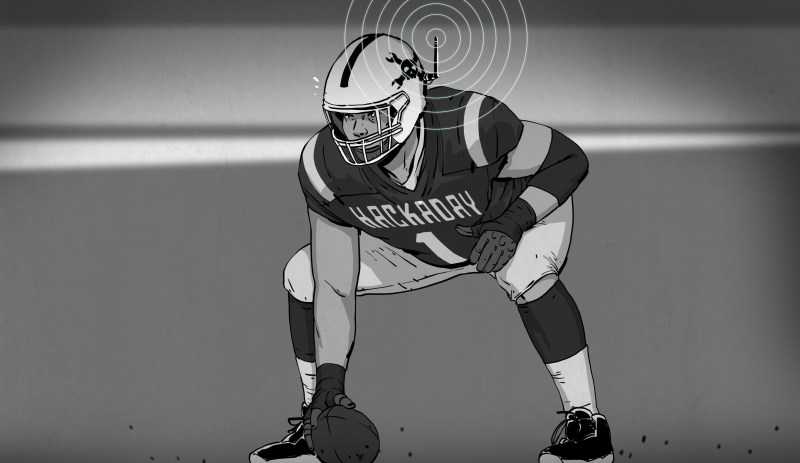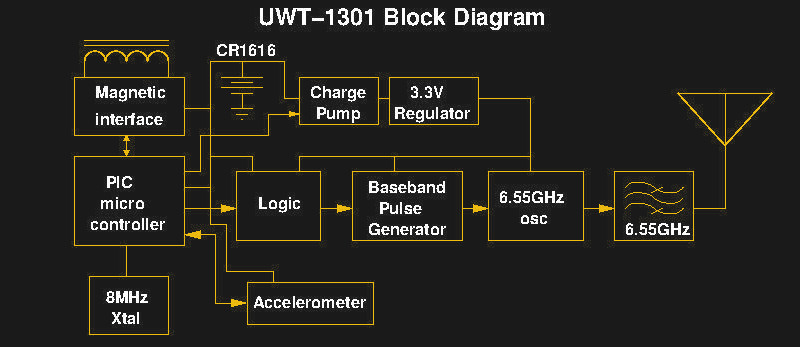
While football in the United States means something totally different from what it means in the rest of the world, fans everywhere take it pretty seriously. This Sunday is the peak of U.S. football frenzy, the Super Bowl, and it is surprisingly high-tech. The NFL has invested in a lot of technology and today’s football stats are nothing like those of the last century thanks to some very modern devices.
It is kind of interesting since, at the core, the sport doesn’t really need a lot of high tech. A pigskin ball, some handkerchiefs, and a field marked off with some lime and a yardstick will suffice. However, we’ve seen a long arc of technology in scoreboards, cameras — like instant replay — and in the evolution of protective gear. But the last few years have seen the rise of data collection. It’s being driven by RFID tags in the player’s shoulder pads.
These aren’t the RFID chips in your credit card. These are long-range devices and in the right stadium, a computer can track not only the player’s position, but also his speed, acceleration, and a host of other statistics.
A STRIPE OF A DIFFERENT COLOR
The company behind the technology is Zebra, and they make RFID solutions for many different industries. At first, this might seem a little gimmicky. Do you really need to know that the halfback is running at a certain speed? Does the color commentator really need to tell us that the quarterback’s average acceleration is down 30% today for some reason? Maybe not, but then again baseball fans have obsessed about statistics for years. However, there are other consumers of this data. Coaches, scouts, and trainers can all use the horde of data to assess players and possibly plan improvements.
It is all part of an NFL program known as NFL NextGen Stats. If you want to know which team has the fastest runners, for example, you can find out on that site. We can now reveal that running back Matt Breida was the fastest ball carrier in the 2019 season with a peak speed of 22.3 miles per hour. Who knew statistics were so exciting?
Of course, all this data is subject to number crunching, so the site can tell you how one quarterback performs compared to the average of all quarterbacks and there are a number of fancy colorful graphs. There are even YouTube videos based completely on these harvested stats.
CRACKING OPEN THE HARDWARE
The RFID transponder is about the size of a coin and reports position and accelerometer readings at 25 Hz. Every compatible stadium has 20 receivers that ship the incoming data to Zebra’s San Jose, California control room in a little more than 100 milliseconds. The company claims they report data to broadcasters in under 500 milliseconds. Material on the vendor’s web site indicates the measurements of position are good to within six inches.

We understandably couldn’t find a lot of technical details on the Zebra or NFL websites. But we got lucky when we went to find some images. The photos above are screenshots from a Zebra promotional video which shows tag itself is clear enough that you can read the FCC ID!

Taking Bob Baddeley’s advice about FCC filings we managed to literally get a look inside of the tag itself. Above you can see the block diagram from the filing that indicates a PIC microcontroller and a CR1616 3V battery for power. A charge pump gives it 3.3V and the RF generation is at 6.55 GHz.




The filing even includes internal photos of the PCB. At 6.5 GHz everything is an antenna or a transmission line, so you can see there is a very distinctive PCB feature near U8 and Q1 that form part of the circuitry. If the big coil at L1 looks scary at 6 GHz, don’t be alarmed. That has to be part of the “magnetic interface” from the block diagram. That coil isn’t carrying anything that high in frequency.
For practice sessions, the tag also can send data in real-time via Bluetooth. This joins a host of other bio instrumentation coaches are starting to use during practice sessions like heart rate monitors. The NFL doesn’t allow this during games, though. But a coach might see that a player is, for example, dehydrated by monitoring stats gathered like this.
DIY
We started thinking about how hard this would be to do for your own backyard athletes. Long-range RFID gear is available, although it can be costly and only makes sense when harvesting data from numerous tags. However, a small wearable package that records data for later is workable. We wondered if some of the better fitness trackers could work in a pinch?
You can hack existing trackers or you can opt for open source. There are even some hacks for the cheap knock offs if you don’t want to lose the name brand tracker to a particularly nasty sack.
LIVING IN THE FUTURE
Given that many of us remember when radio was a big purchase and a personal computer was unthinkable, it is funny to see radio and computers so commonplace and so tiny. It’s a story that repeats itself. Putting a computer in a toy, or even a car, would have been outlandish science fiction until relatively recently. The shoulder pad sensors are
So if you are watching the big game and you hear some oddball stat, you’ll know where it came from. Or, just hang out on the NFL stats site and find out the ratio of weight to acceleration for each player or something like that.
[“source=hackaday”]
